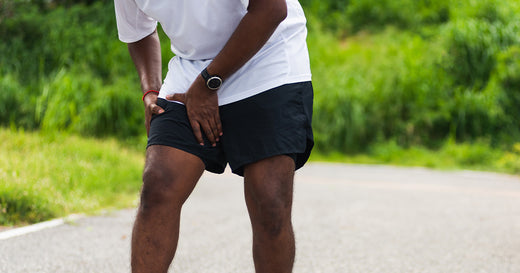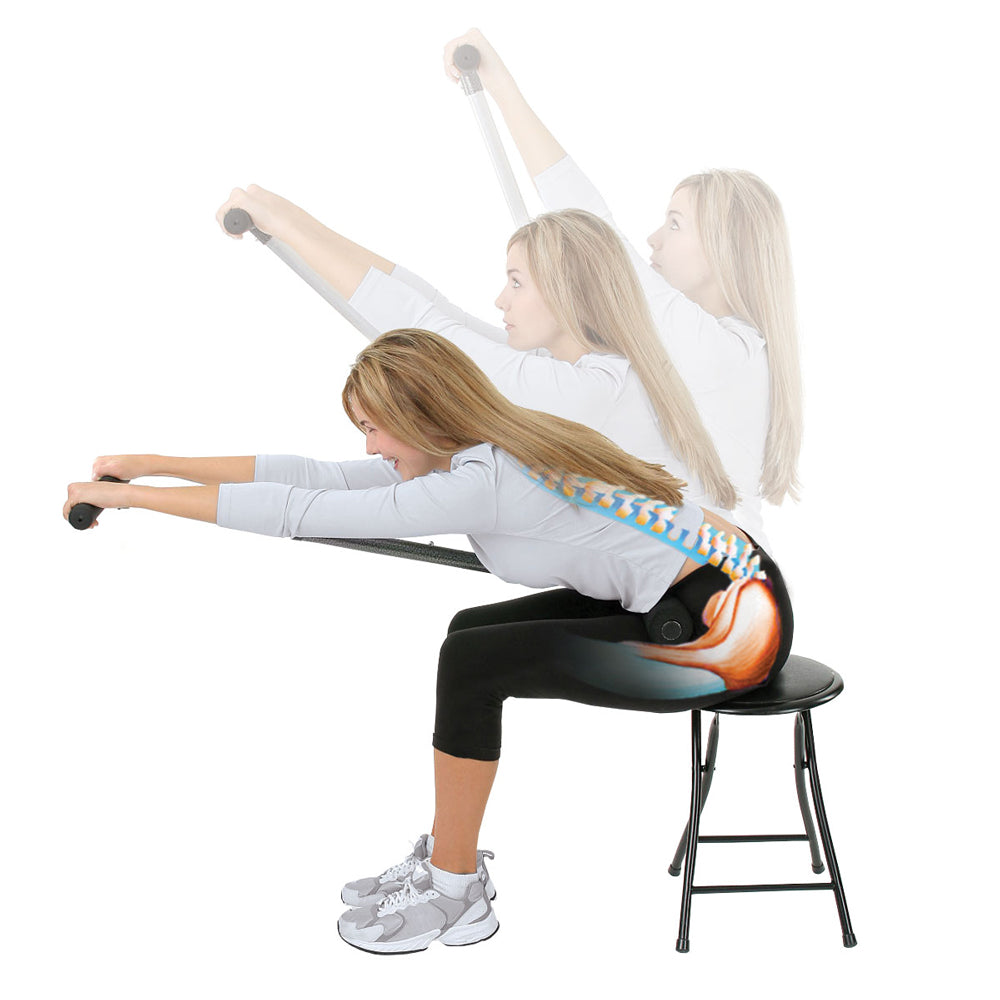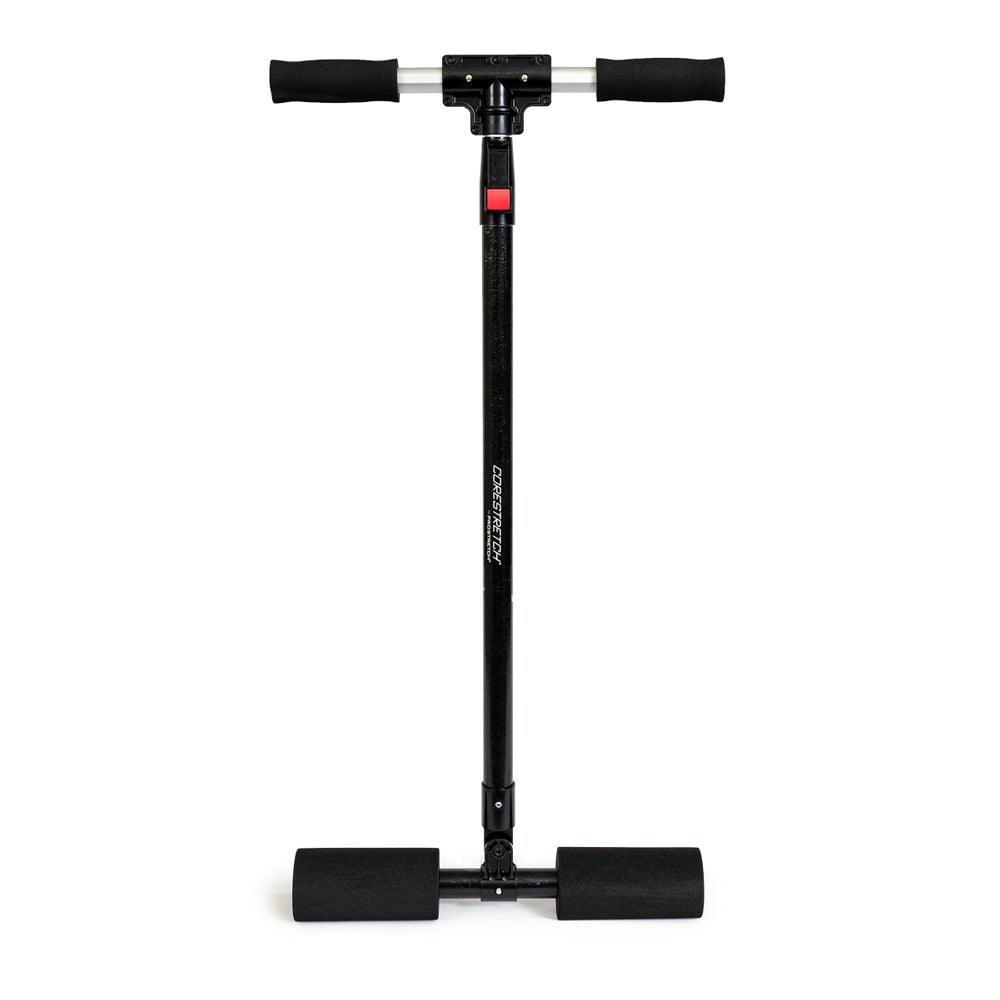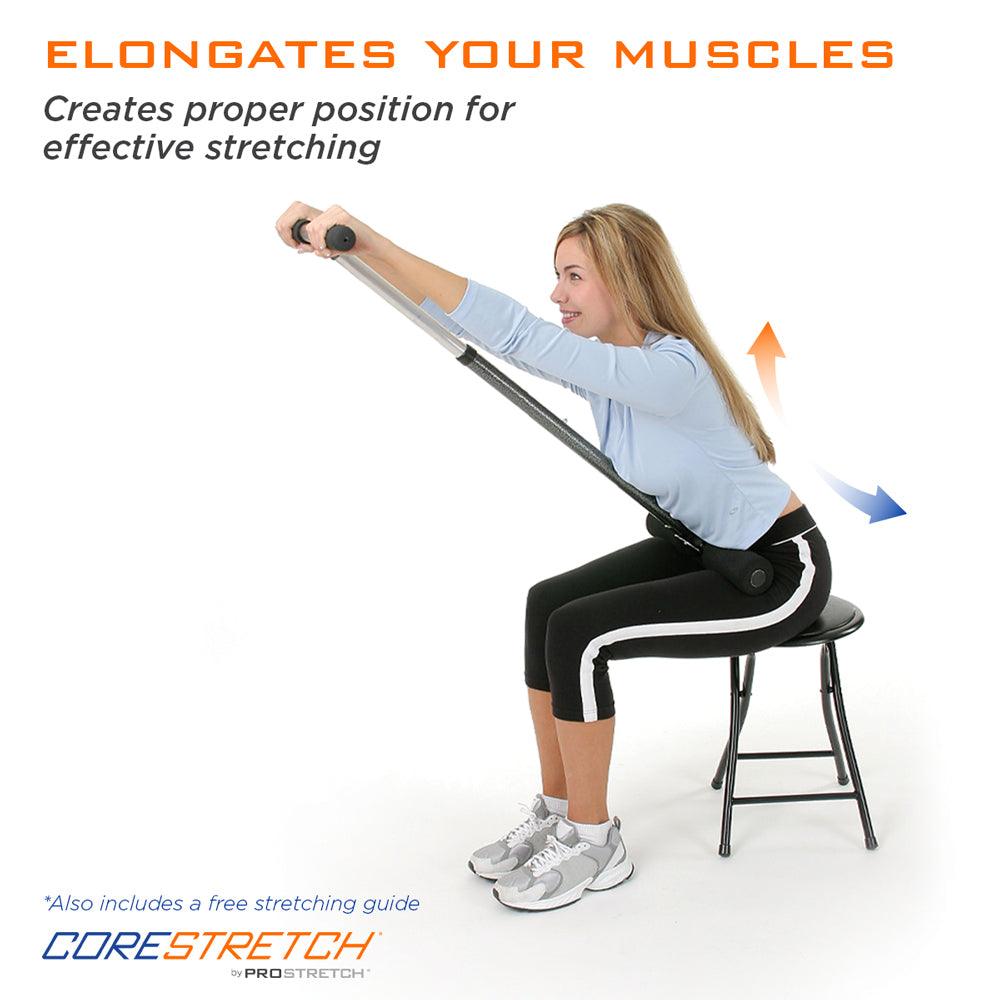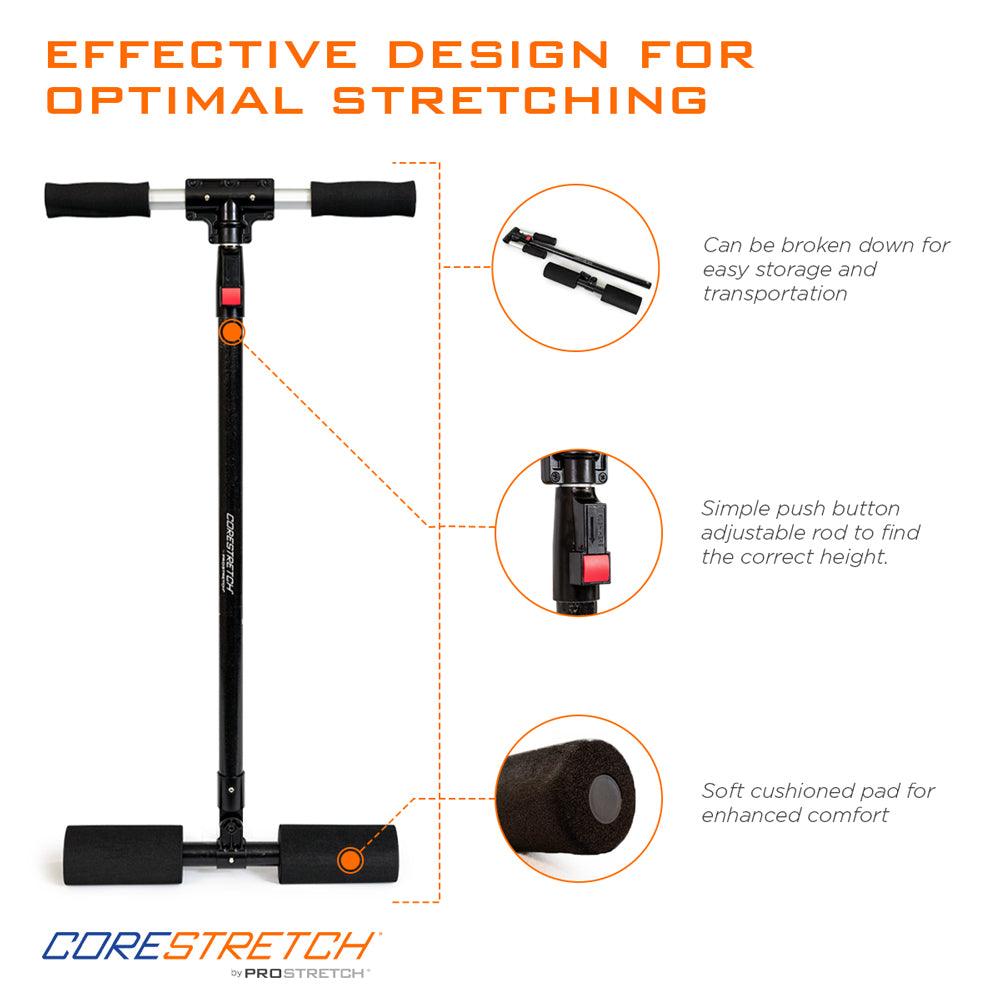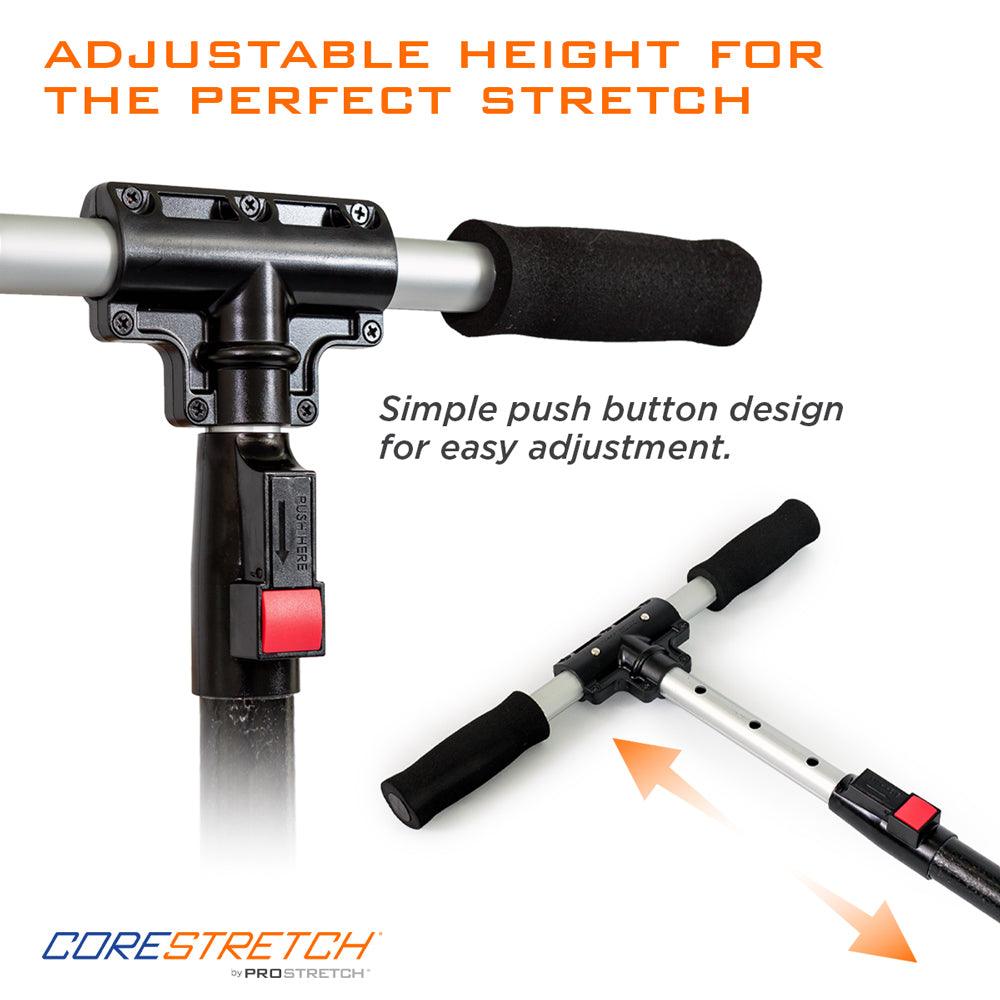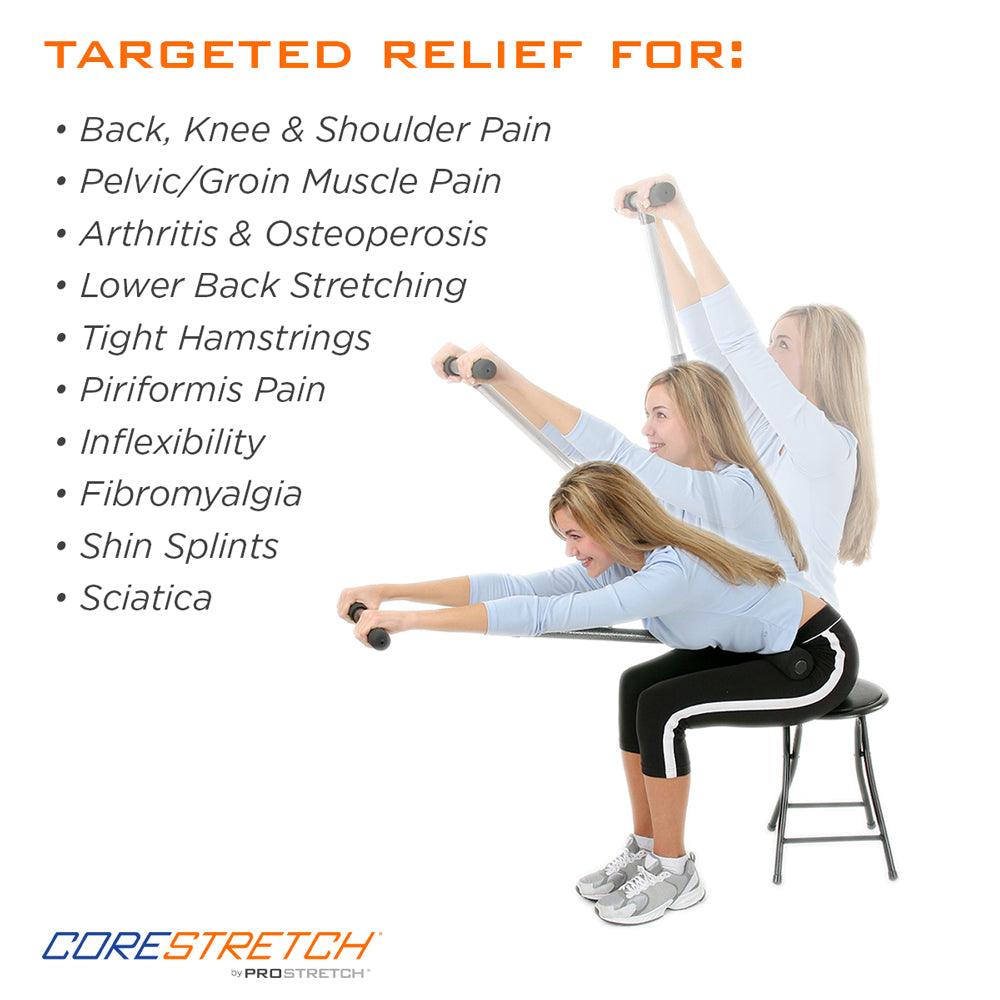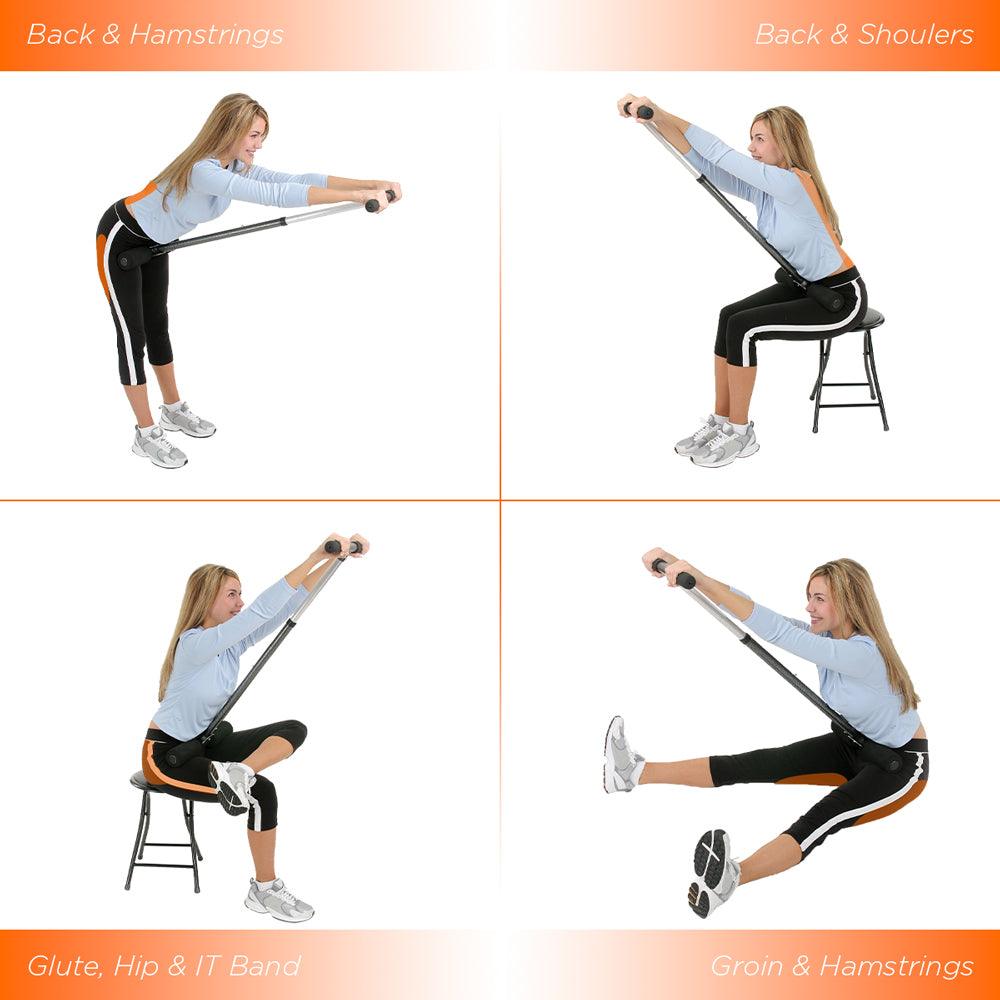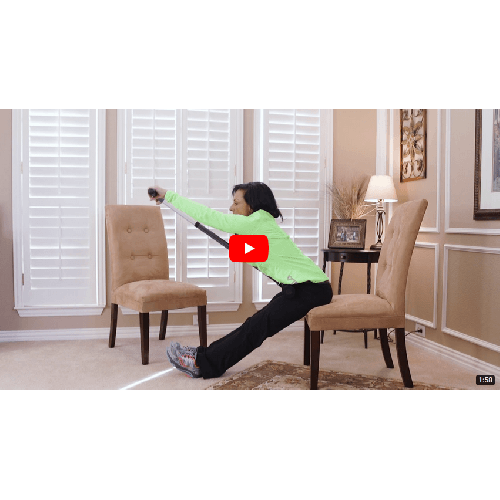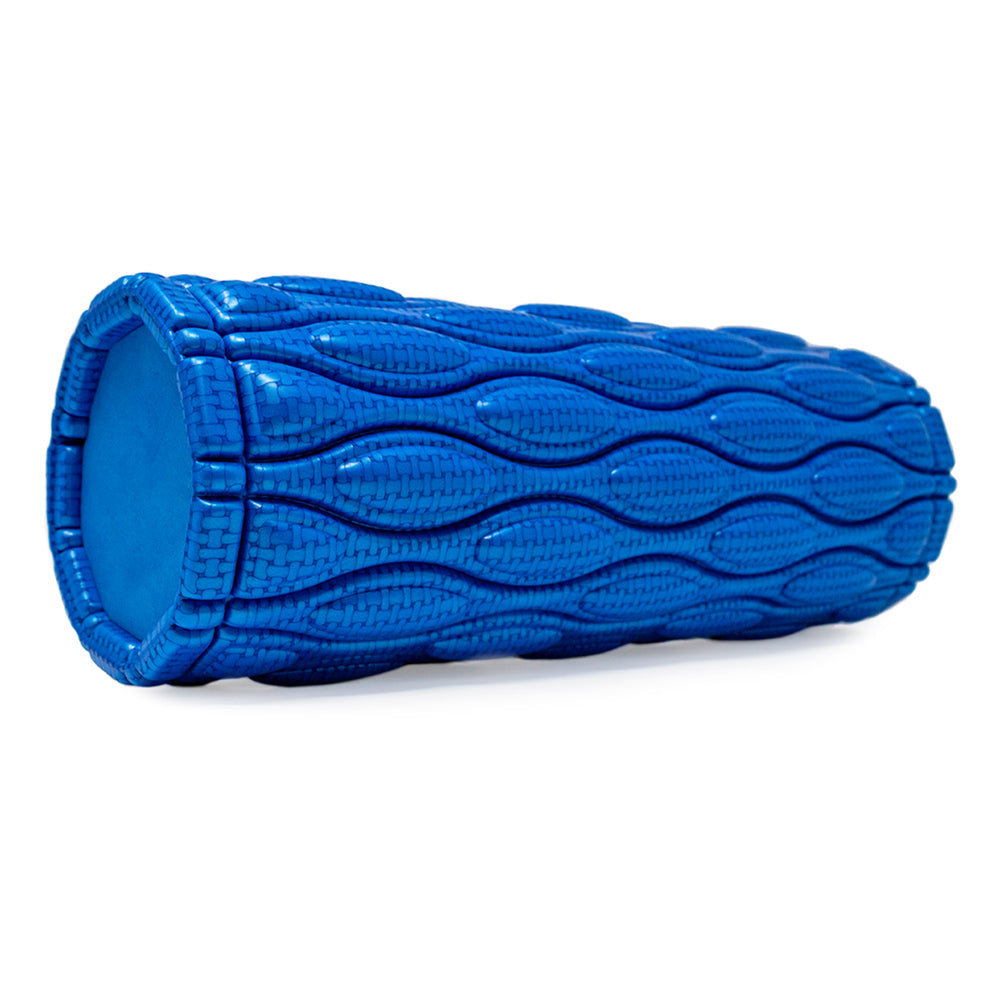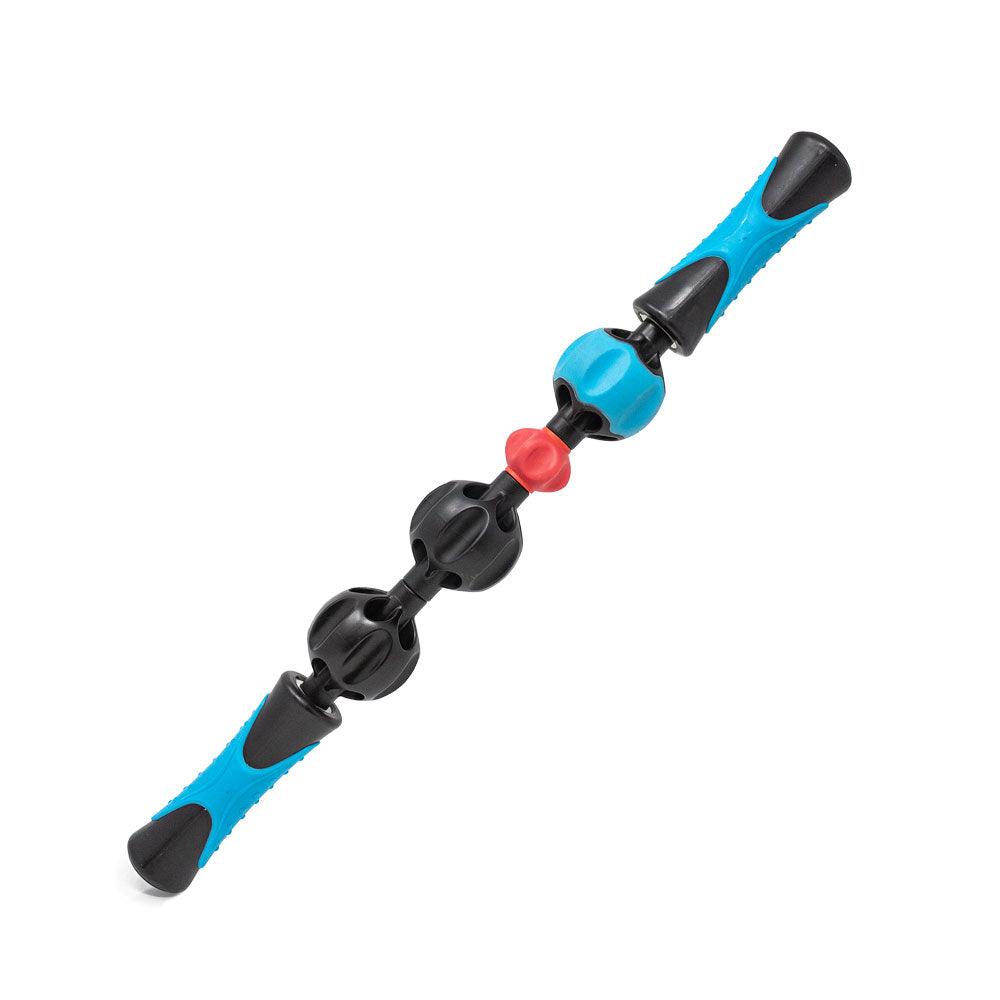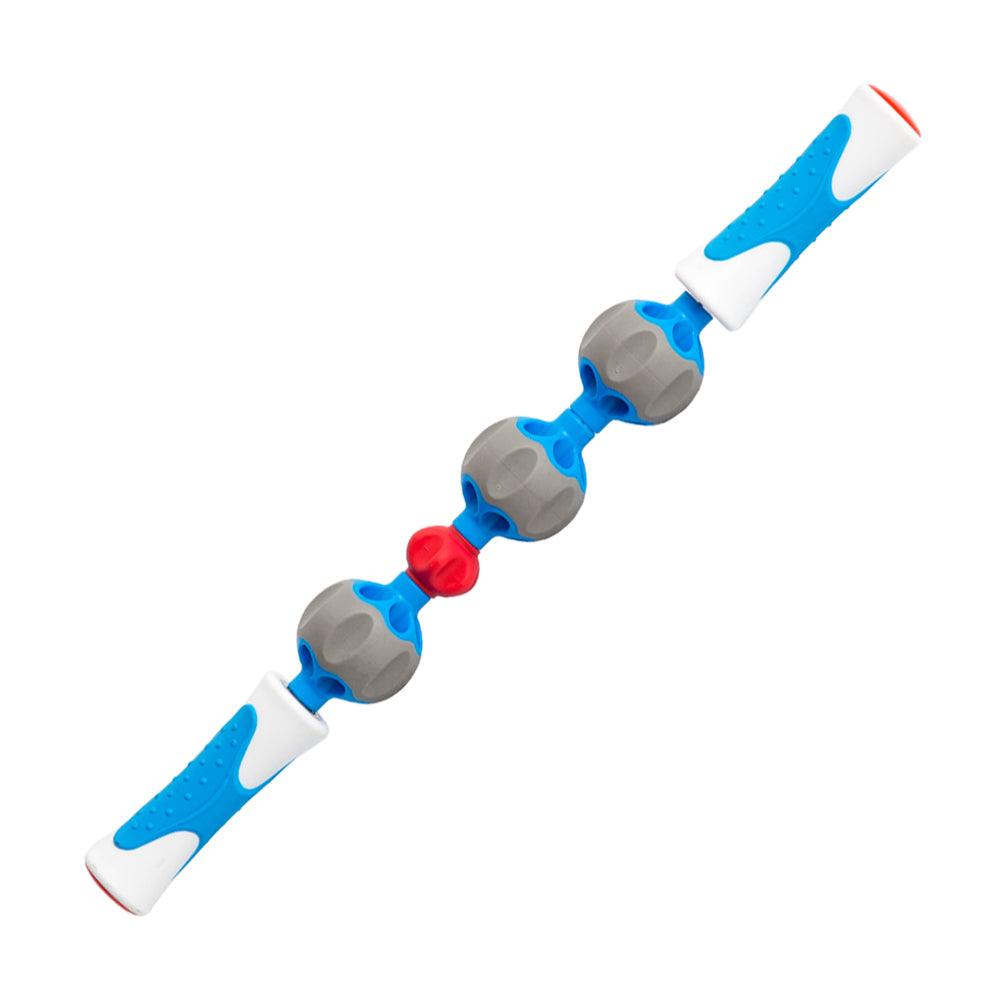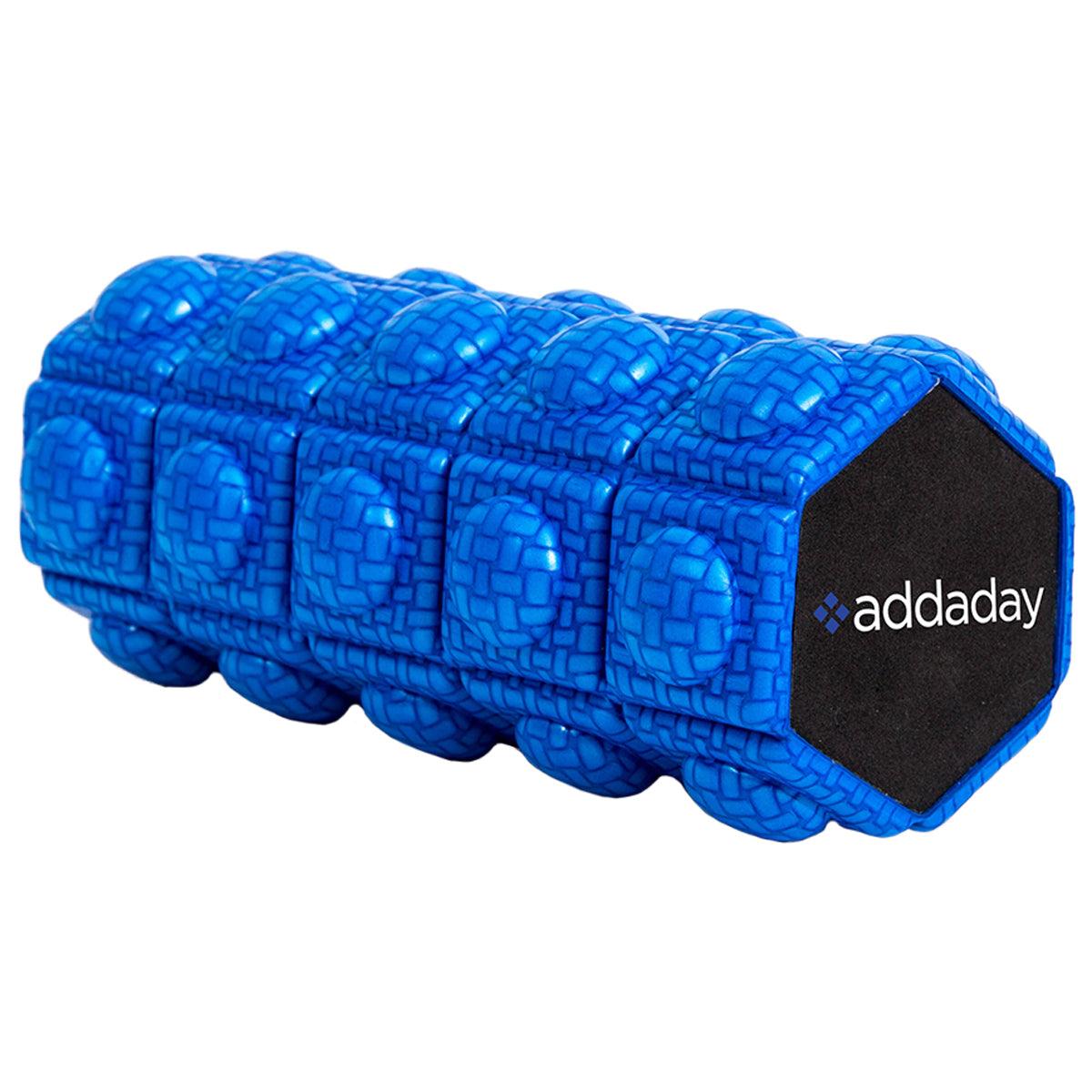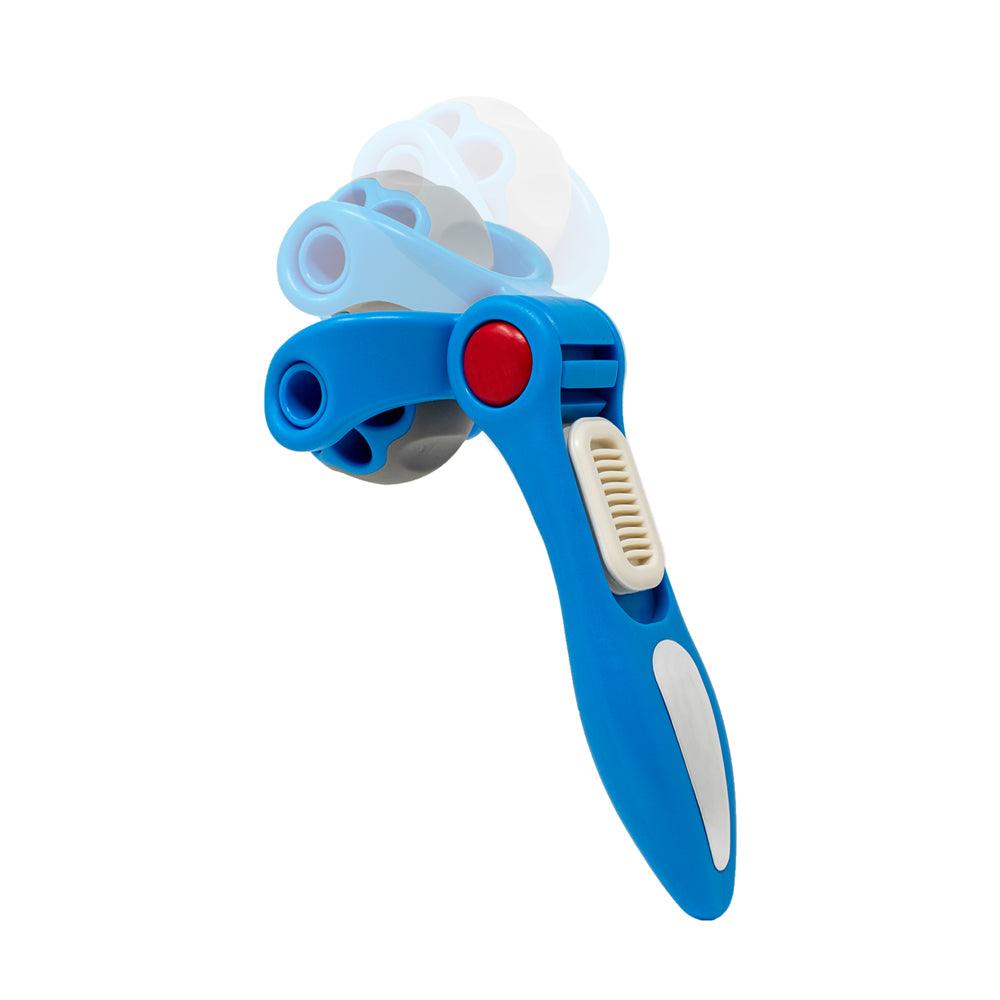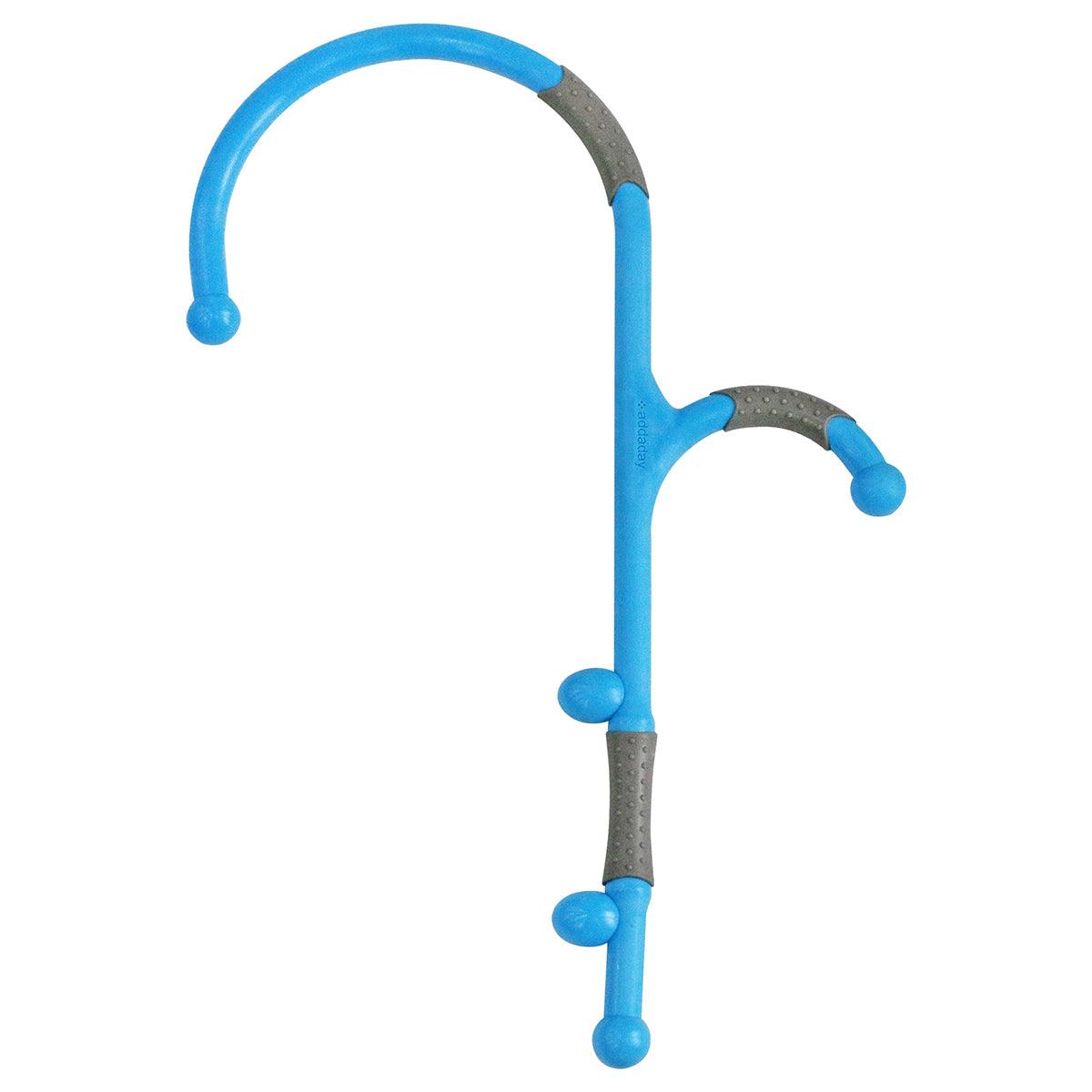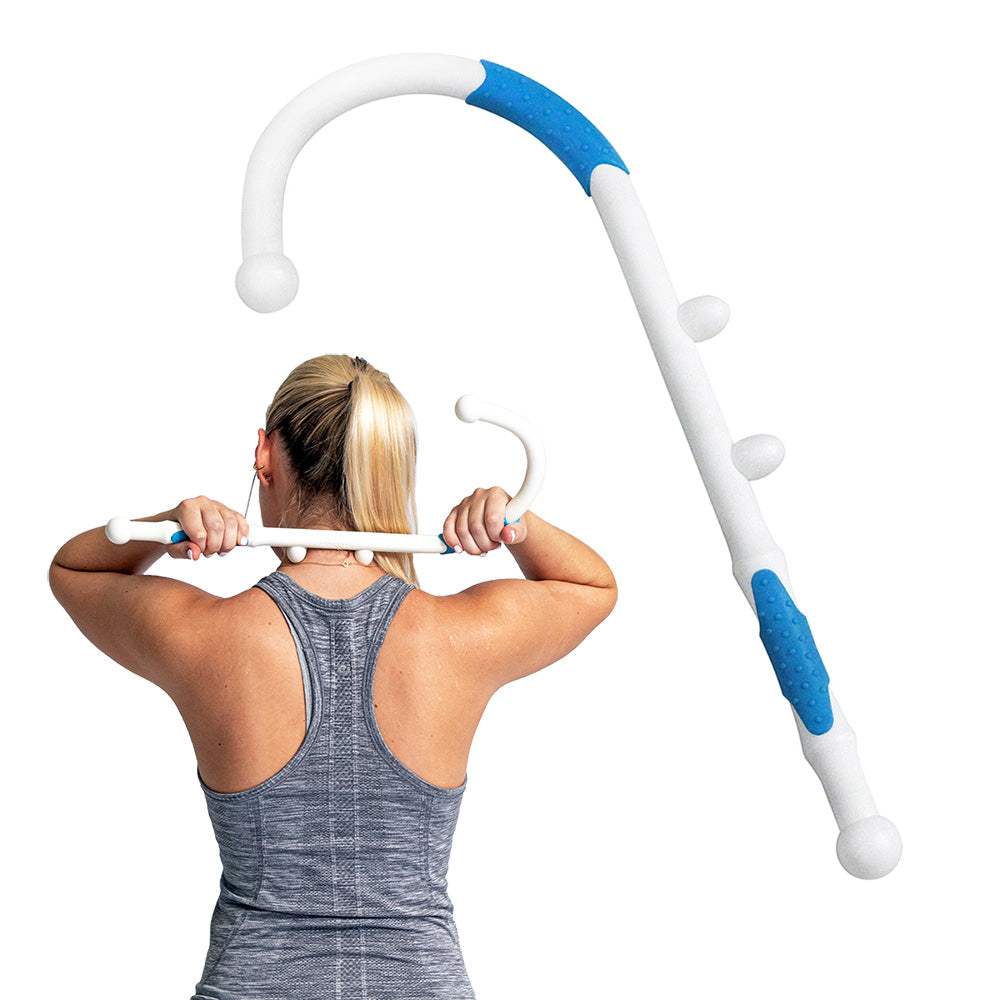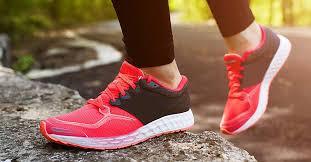Doing upper leg pain exercises will relieve pain, alleviate stress, and reduce the amount of inflammation or swelling your injury may be causing. It is important to understand that when you participate in upper leg pain exercises and stretches, that you do so with the proper protective gear.
Products such as a thigh compression sleeve will provide you with the support you need during your exercises, aiding in proper healing. After doing upper leg pain stretches and exercises, take some time to use the ProStretch® Pro Stick Massage Roller to dig down and massage those muscles and tendons. Not only will it provide a needed massage, but it will also help to eliminate scar tissue and encourage healing.
Table of contents:
- Understanding Upper Leg Pain
- Home Stretching Exercises for Upper Leg Pain
- Upper Leg Pain Stretching Exercises Using CoreStretch
- How to Prevent Upper Leg Pain?
Understanding Upper Leg Pain
Pain in the upper leg can vary from a dull, constant discomfort to intense, piercing feelings, which can impact your daily routine. Whether it stems from overexertion, muscle tension, or an existing medical issue, it's important to address the pain promptly to facilitate a speedy recovery.
Common Causes of Upper Leg Pain
- Muscle Strain - Often from sudden movements, heavy lifting, or overexertion.
- Tendinitis - An inflammation of the tendons due to repetitive stress.
- Sciatica - A pain that starts from the lower back and down the leg, often due to nerve compression.
- Hamstring Injuries - Tears or strains in the muscles at the back of your thigh.
Home Stretching Exercises for Upper Leg Pain
Including simple stretching exercises into your routine can help relieve and prevent upper leg pain. Here are some exercises you can do at home:

Hamstring Stretch
Stretches the back of the thigh, relieving tightness and improving flexibility.
- Sit on the floor with one leg extended.
- Reach forward to touch your toes.
- Then, keep your back straight.
- Hold for 20-30 seconds, then switch legs.

Quad Stretch
Targets the front of the thigh, reducing tension in the quads.
- Stand on one leg, bend the other knee, and bring your heel toward your buttocks.
- Hold your ankle with your hand and pull gently.
- Hold for 20-30 seconds, then switch legs.

Hip Flexor Stretch
Relieves tightness in the hips and upper thighs.
- Kneel on one knee, with the other foot in front.
- Push your hips forward while keeping your back straight.
- Hold for 20-30 seconds, then switch sides.
IT Band Stretch
Stretches the outer thigh, relieving tension in the IT band.
- Stand with your legs crossed, lean to one side, and reach your arm over your head.
- Hold for 20-30 seconds, then switch sides.
Stretching with CoreStretch® for Upper Leg Pain
Here are some upper leg pain stretching exercises using ProStretch® CoreStretch® by Medi-Dyne:

CoreStretch Exercise 1
- Sitting in a chair, rest the padded foam bar across your lap.
- Adjust the handles so you are in a comfortable position.
- Cross one leg over the top of the other, with the ankle resting on top of the opposite knee.
- Lean forward to feel the stretch. Hold, release, and repeat on the other side.

CoreStretch Exercise 2
- Standing straight up, rest the foam bar across your lap and hold onto the handles in a comfortable position.
- Keeping your legs straight, bend forward at the waist to achieve a deep stretch.

CoreStretch Exercise 3
- Sitting on the floor, put your legs straight out in front of you and open them up to a wide spread.
- With the foam bar in your lap and your hands comfortably holding the handles, lean forward slowly.
How to Prevent Upper Leg Pain?
Preventing upper leg pain is often about maintaining flexibility, strength, and proper posture. Here are some tips to help you avoid discomfort:
- Stay Active - Regular exercise, including strength training and stretching, helps keep your muscles strong and flexible.
- Warm-Up - Always warm up before engaging in physical activity to prepare your muscles for exertion
- Maintain Proper Posture - Whether standing, sitting, or lifting, keeping good posture reduces unnecessary strain on your muscles.
- Listen to Your Body - Don’t push through pain; if something feels off, take a break or consult a healthcare professional.
Conclusion
Upper leg pain can be painful, but you can manage and even prevent it with the right stretching exercises and preventive measures. Incorporating stretching exercises at home and using tools like ProStretch® CoreStretch®, can significantly improve your recovery and overall leg health.
PLEASE NOTE: The information on this website and article is for information only and should not be used as a substitute for consulting your doctor. Consult your doctor for proper diagnosis and rehabilitation.




